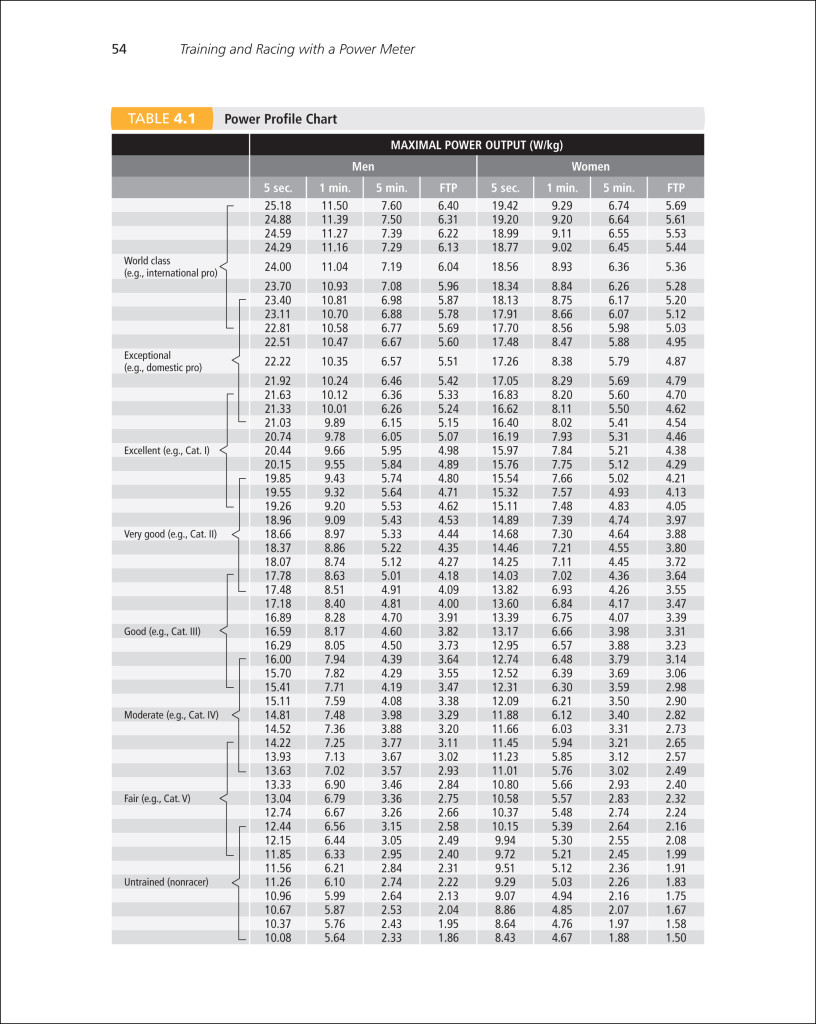If you ride bikes regularly, especially up the unavoidable hills of our glorious state, you likely have experienced the simple physics that body weight can have on performance. The concept seems simple: the more or less you weigh, the more or less energy it will take to pedal your bike. But that doesn’t mean it’s easy to achieve, let alone to know what weight is best for your body, your gender, your riding style, etc. The purpose of this quick article is to help you determine your ideal power:weight (P:W) so you can feel strong without putting yourself at risk of being malnourished.
Is there one ideal body weight to strive for?
Rule of thumb equation for appropriate weight is to take 100 pounds for the first 5 feet of height (for women) and 106 pounds (for men). Then, add 4-6 pounds per inch of height above this base (women), and 5-7 pounds per inch (men). Now, this can be used as a baseline calculation, but there is a lot of variability. There is a fine line between what we want to be striving for and what is realistic. What I mean by this is that we must consider the fact that there is a point where losing too much weight can lead to loss of strength on the bike. Therefore, it is important to factor in your power:weight (ratio) when trying to determine your personal ideal body weight.
Everyone’s always talking about power:weight
By definition, the P:W ratio is the formula used to determine your strength compared to your weight, and it’s the great equalizer when comparing riders of different sizes. It is calculated by dividing your body weight in kilograms (1 kg = 2.2 lbs) into average watts for a given range. For example, if you can produce 300 watts for your functional threshold power (FTP – the maximum average power that you can hold for one hour), and you weigh 74 kg (163 lbs), your power to weight ratio is 4.05 at your FTP range. This means you can generate 4.05 watts for every kilogram of body weight. A power to weight ratio of 4 to 4.5 is equivalent to a competitive Category 2 racer. A power to weight ratio of 5-6 would put you in the range of a Category 1 elite professional (according to Andy Coggan’s power profiling chart, displayed in this article).
Since P:W is determined by the simple formula power (watts) ÷ mass (kg), hopefully even the most non-mathematical readers can appreciate that there are three ways to increase your power-to-weight ratio:
- Increase your power output while keeping your weight constant
- Keep your power output constant while decreasing your weight
- Increase your power output while also decreasing your weight.
Two important aspects of this equation are the loss of body fat while maintaining or increasing lean muscle mass and strength. However, there are limits to how much you can or should lose in body fat as well. The minimum body fat range for men is 6% and for women is 14%. Dropping below these ranges can negatively affect your health and performance. But if you are nowhere near these body fat ranges and have a goal to lose weight, then losing a few pounds in body fat can lead to a big difference in your strength on the bike.
So, which is more important, losing weight or gaining power?
For novice cyclists and/or experienced racers who are carrying around more than 10 extra pounds, losing weight and gaining power are equally important and equally achievable. This also means that heavier cyclists can make bigger improvements in their P:W ration because they have more room to attack both parts of the equation. It’s a matter of being realistic as well as honest with yourself. Find the spot where you can maintain your desired weight without losing performance. In short, there is a lot to gain as a cyclist by reducing your weight, including climbing faster, and even more to gain by simultaneously getting stronger, but achieving an ideal race weight happens with smart decisions and hard work.

[Editor’s Note: See Breanne’s guide to Achieving Your Ideal Body Weight.]
If you want to determine your FTP, ideal P:W ratio, and/or get a nutrition plan to achieve these numbers, give me a call!
Breanne Nalder, MS, RDN has a Master’s degree in nutrition with an emphasis in sports dietetics at the University of Utah. She is a Registered Dietitian, the nutrition coach at PLAN7 Endurance Coaching, and races for Visit Dallas DNA Pro Cycling team. For individual custom nutrition coaching, you can reach Breanne at 801-550-0434 or [email protected].










[…] to be lean machines and go uphill like billygoats, right?! In 2016, I wrote an article titled “Weight Loss vs. Power Gain, The Struggle is Real” which tackled the subject by discussing methods to determining your ideal power:weight (P:W) […]
Comments are closed.